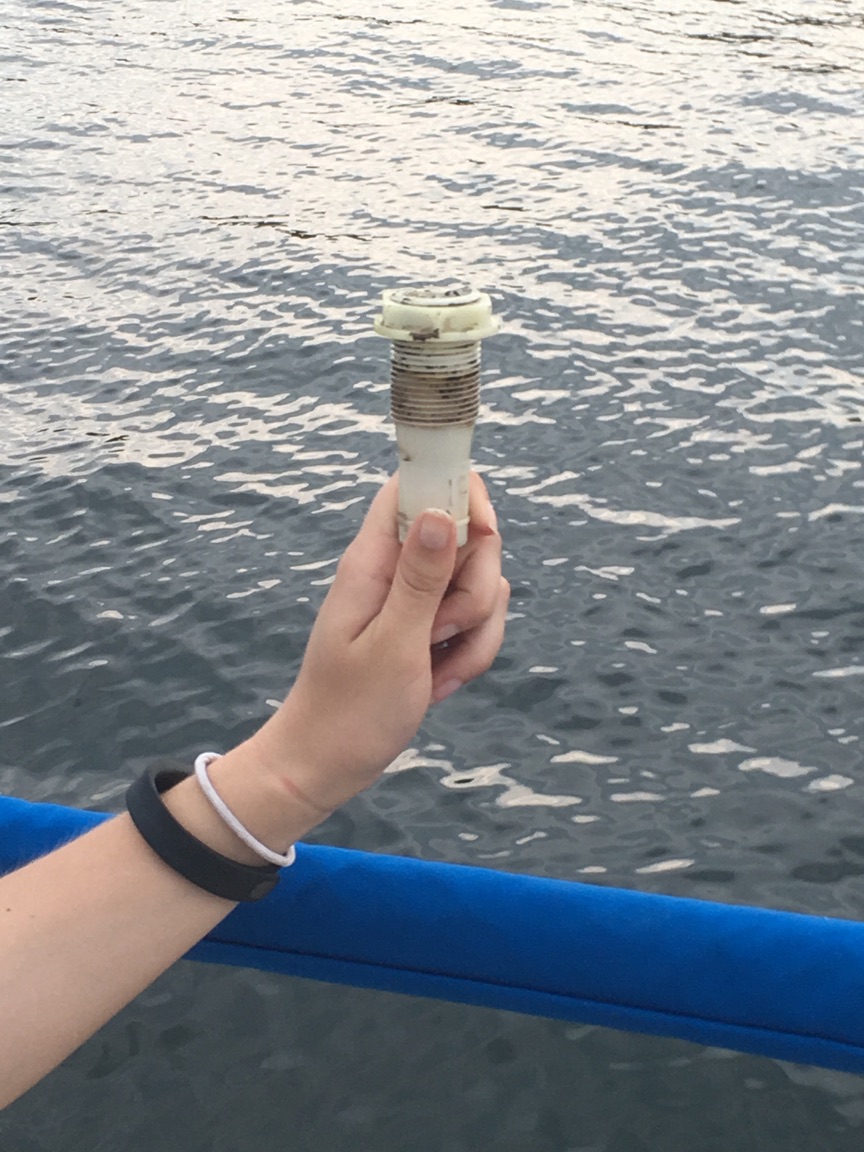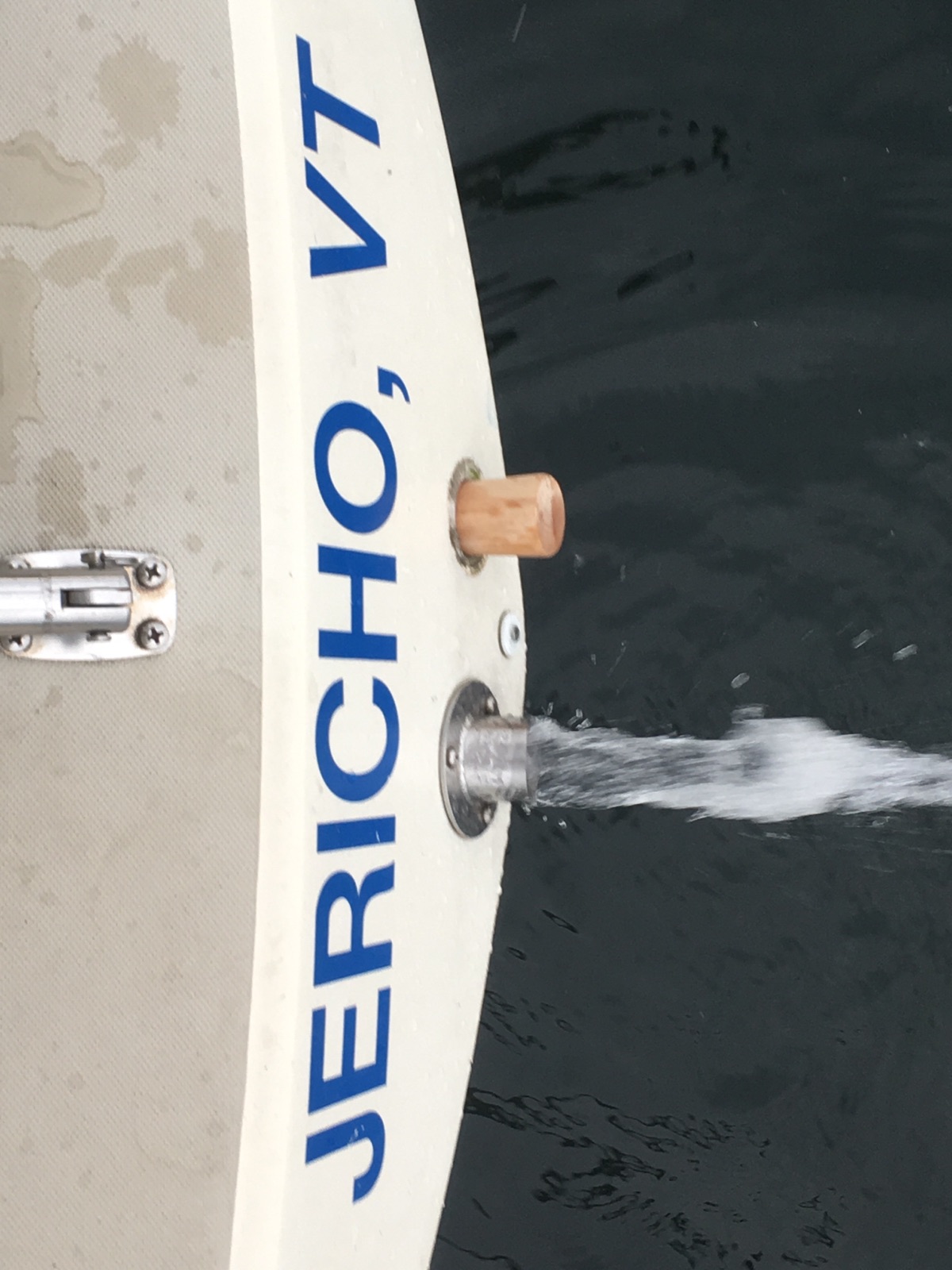- Home |
- Blog |
- SPRUNG A LEAK!
SPRUNG A LEAK!

Our first sail of the 2016 season was an "EXCITING" one! My wife, daughter, and I went out with friends and their son back in May and had a good time. My wife went down below to get something, and an alarm was going off. She turned around and asked me what that alarm was. My response was that "it isn't good news because the only alarm that we have on the boat is a bilge alarm." I asked her to look in the bilge to see how much water was there, and she responded that there was quite a bit of water in the bilge. I had my daughter take the wheel to sail the boat, and I immediately went down below, and we started looking for the water source. While we were looking around, I asked my friend's son to begin pumping the manual bilge pump from the cockpit. So while we were looking for the water source, he was pumping water out of the boat using the manual bilge pump.
This spring, I replaced one of our thru-hulls because the backing wood was getting a bit soft. My first thought was that this thru-hull might be leaking. I opened up the compartment where this thru-hull is located and found, much to my relief, that the compartment was dry. So I knew that the water was coming in someplace else. My wife and I continued to look for the leak. At one point, my wife said that she found a stream of water flowing by the engine compartment. At that point, I knew that the leak must be somewhere on the transom. I looked into the engine compartment and behind the engine and finally spotted the flowing water source.
We had a one and a half-inch hole on the back of the transom where the water was coming in. I knew that we have four thru-hulls on our transom, and the water was coming in one of those thru-hulls. Boy, a lot of water can flow through a one and a half-inch hole when it is underwater. I did not know which hose was supposed to be connected to that thru-hull yet.
We carry solid wood plugs on our boat near all of our under-water thru-hulls, and we have spares just in case. I grabbed one of those spare wood plugs and inserted it into the hole from the transom's outside, which stopped the water flow into the boat. Our friend's son continued to pump the manual bilge pump, which helped reduce the bilge's water level. Now that I knew the water flow source, I was in a much better "State of Mind" after finding the hole and plugging it temporarily.
As we headed back to the mooring, I looked to see which hose connected to that thru-hull. It turns out that the thru-hull was for our automatic bilge pump hose. So our automatic bilge pump was pumping water in a circle. The water was going from the bilge to the back of our boat near the transom and then flowing back into the bilge because the hose was disconnected from the through-hull.
Once we got back to our mooring, we continued to pump the water out of the bilge with the manual bilge pump. When our boat is not moving, our transom is no longer underwater, so there was no danger of any more water flowing into the vessel through the hole.
I have to admit that once we discovered that we were taking on water, I was a bit "nervous" until we found the source of the problem. I stayed calm on the exterior, but I ran through all of the possible scenarios inside my head. I didn't want to make our guests nervous and wanted to keep everyone calm. By staying calm, we could find the problem and then temporarily fix the problem and avoided what could have been a bad situation.
Boat History:
When we bought our boat over ten years ago, we had our boat surveyed. Our surveyor recommended several things that we should do to our boat. He suggested two ideas to install a bilge alarm and have wooden plugs for all the thru-hulls. I am so glad that I listened to him, added the bilge alarm, and had wooden plugs onboard. The bilge alarm gave us an early warning that we had a problem, and the wooden plugs allowed us to temporarily solve the problem by stopping the flow of water into the boat. Another thing that helped us is storing the handle for our manual bilge pump in a small compartment in our cockpit. We knew exactly where the pump handle was near the pump, so we didn't have to waste time looking for the handle when we needed it.

 The thru-hull fitting that broke was a plastic or nylon fitting. I have replaced this automatic bilge pump thru-hull fitting with a stainless steel fitting. We have three other thru-hull fittings on our transom that are also plastic. I will be replacing all three of these fittings this winter with stainless steel fittings while the boat is on the hard.
The thru-hull fitting that broke was a plastic or nylon fitting. I have replaced this automatic bilge pump thru-hull fitting with a stainless steel fitting. We have three other thru-hull fittings on our transom that are also plastic. I will be replacing all three of these fittings this winter with stainless steel fittings while the boat is on the hard.
Good Things/Planning ahead:
- Bilge Alarm
- Wooden Plugs
- Manual Bilge Pump Handle Located Near the Pump
Bad things:
- Plastic thru-hull fitting on the transom
Summary:
An early warning of the existing problem and being organized and prepared took what could have been a bad situation and turned it into a solvable problem. If you don't currently have a bilge alarm, I would highly recommend that you install one. Our bilge alarm is at a level that is slightly higher than our bilge pump, so if the bilge pump is not keeping up with the rising water, we are alerted to the problem. Some people have an alarm built into their secondary bilge pump, and the secondary bilge pump is installed at a higher level than their primary bilge pump. Either way, if rising water in the bilge is a problem, you get alerted early on and can try and find the problem and resolve it before the water is above your cabin sole. I would also recommend having wood plugs on your boat. If the boat ever leaks, you will have these handy to plug or slow down water flow into your vessel.
When boating, it is always a good thing to stay calm when a problem or crisis arises. It helps to have a clear head to think through the problem. It is also essential to remain calm, so your crew stays calm. You don't want anyone to panic since you may need them to help out with the situation and lend a helping hand.
Written by: Steve Charlebois
owner Sea Dog Boating Solutions, LLC - Unique Boating Accessories + Boating Services
Did you like this blog post? Share it below!
Please let us know if you find this post helpful. Contact Us Here if you have any questions or comments.

